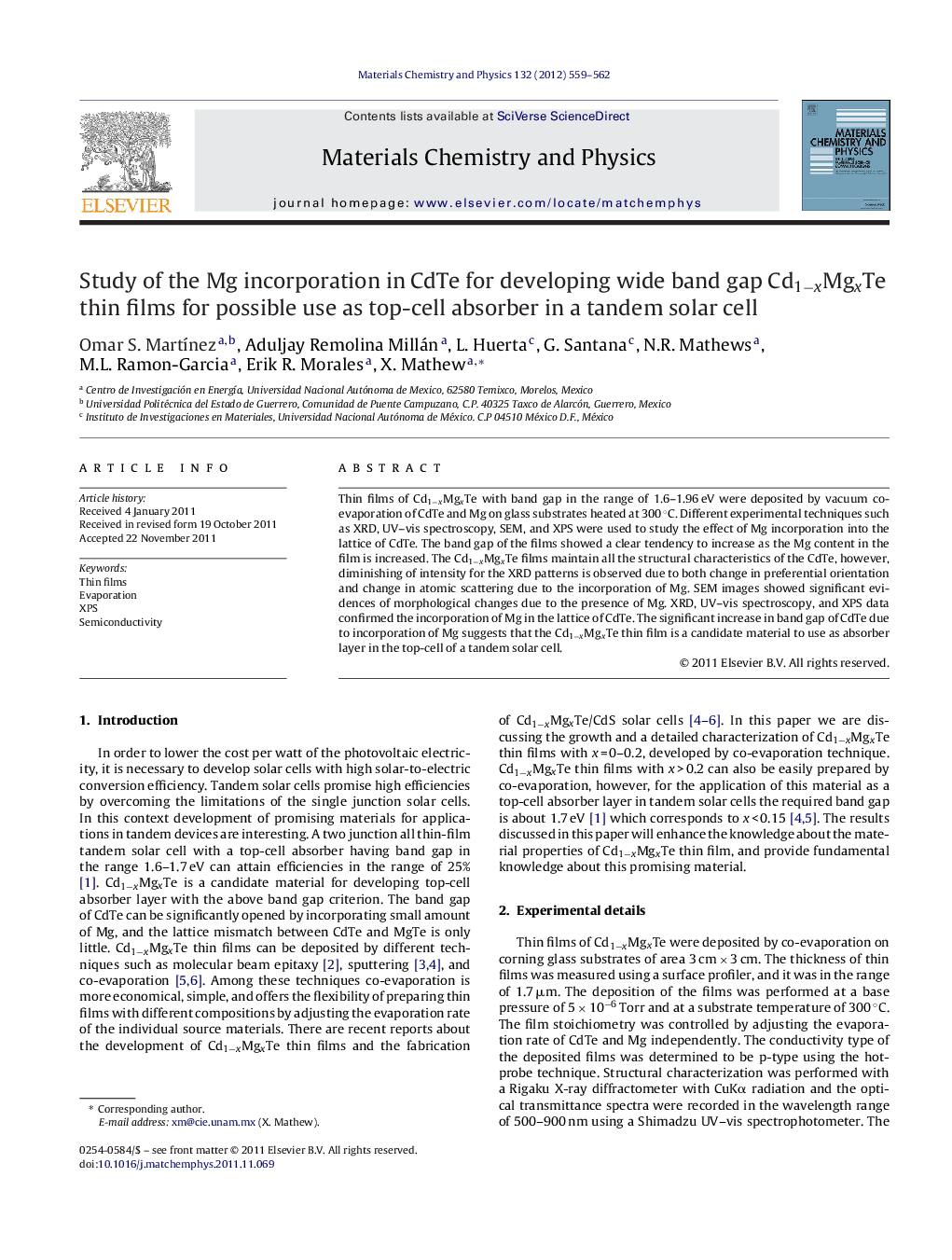| Article ID | Journal | Published Year | Pages | File Type |
|---|---|---|---|---|
| 1523653 | Materials Chemistry and Physics | 2012 | 4 Pages |
Thin films of Cd1−xMgxTe with band gap in the range of 1.6–1.96 eV were deposited by vacuum co-evaporation of CdTe and Mg on glass substrates heated at 300 °C. Different experimental techniques such as XRD, UV–vis spectroscopy, SEM, and XPS were used to study the effect of Mg incorporation into the lattice of CdTe. The band gap of the films showed a clear tendency to increase as the Mg content in the film is increased. The Cd1−xMgxTe films maintain all the structural characteristics of the CdTe, however, diminishing of intensity for the XRD patterns is observed due to both change in preferential orientation and change in atomic scattering due to the incorporation of Mg. SEM images showed significant evidences of morphological changes due to the presence of Mg. XRD, UV–vis spectroscopy, and XPS data confirmed the incorporation of Mg in the lattice of CdTe. The significant increase in band gap of CdTe due to incorporation of Mg suggests that the Cd1−xMgxTe thin film is a candidate material to use as absorber layer in the top-cell of a tandem solar cell.
► Thin films of Cd1−xMgxTe with high spatial uniformity and band gap in the range of 1.6–1.96 eV were deposited by vacuum co-evaporation of CdTe and Mg. ► Obtained Cd1−xMgxTe films have the structural characteristics of the CdTe, evidence of the change in atomic scattering due to incorporation of Mg was observed. ► XRD and XPS data confirmed the incorporation of Mg in the lattice of CdTe. ► SEM images revealed the impact of Mg incorporation on the morphology of the films, the changes in grain size and grain morphology are noticeable.
